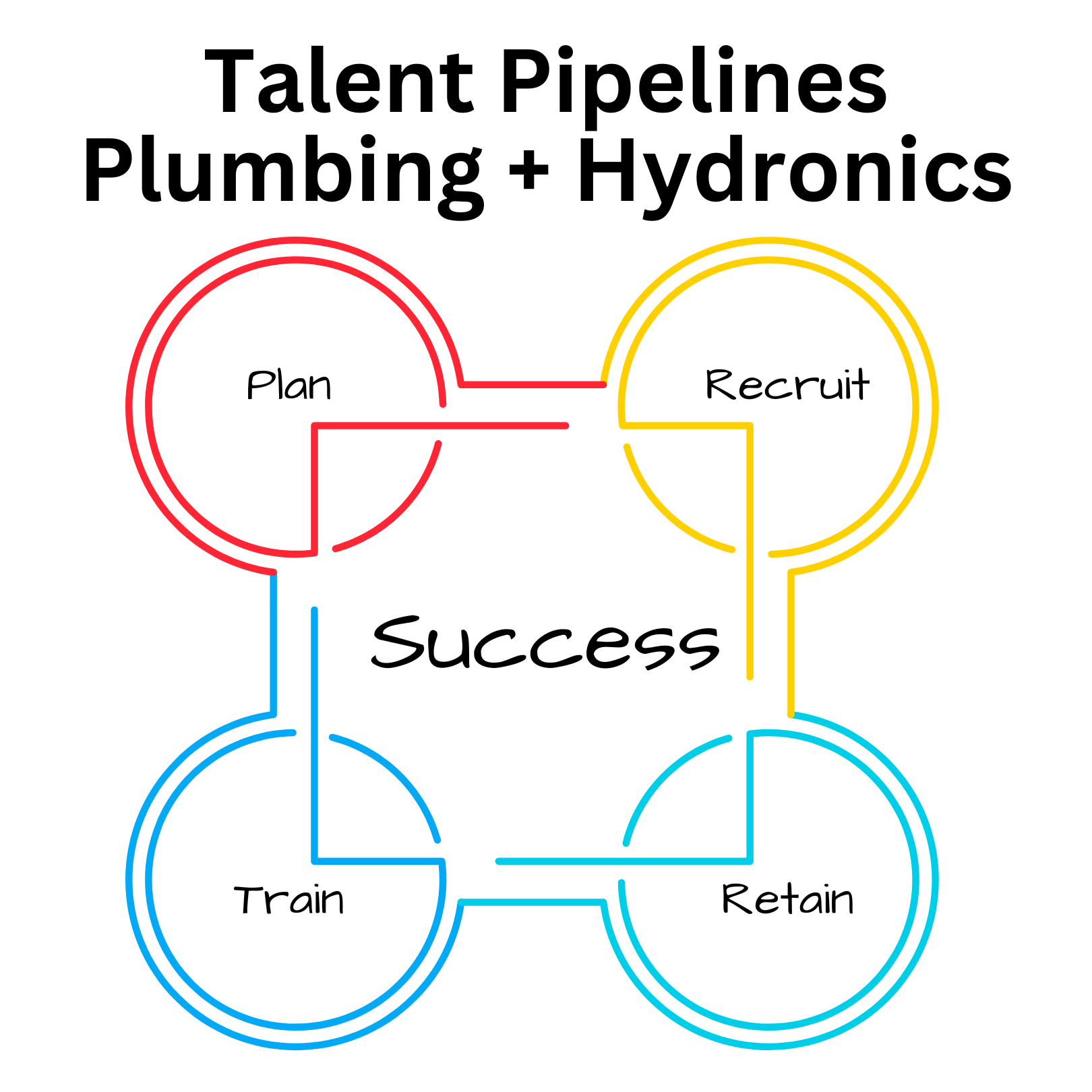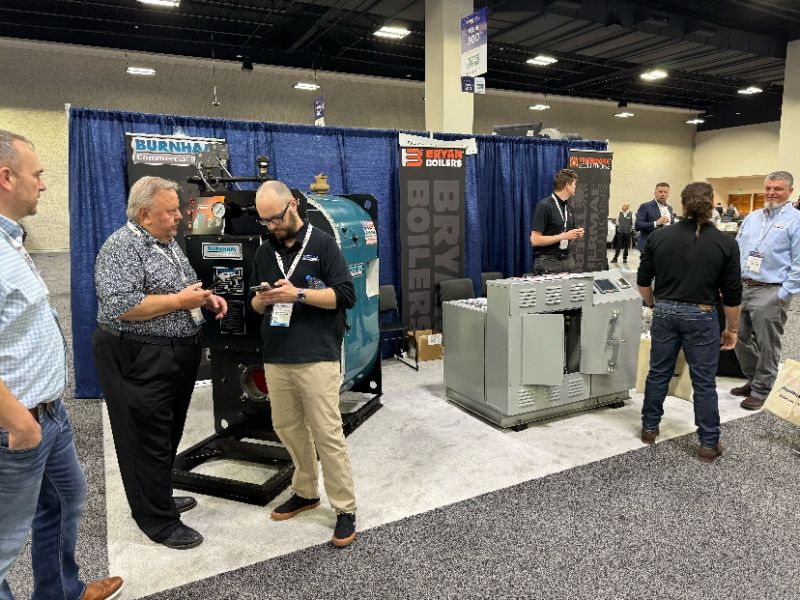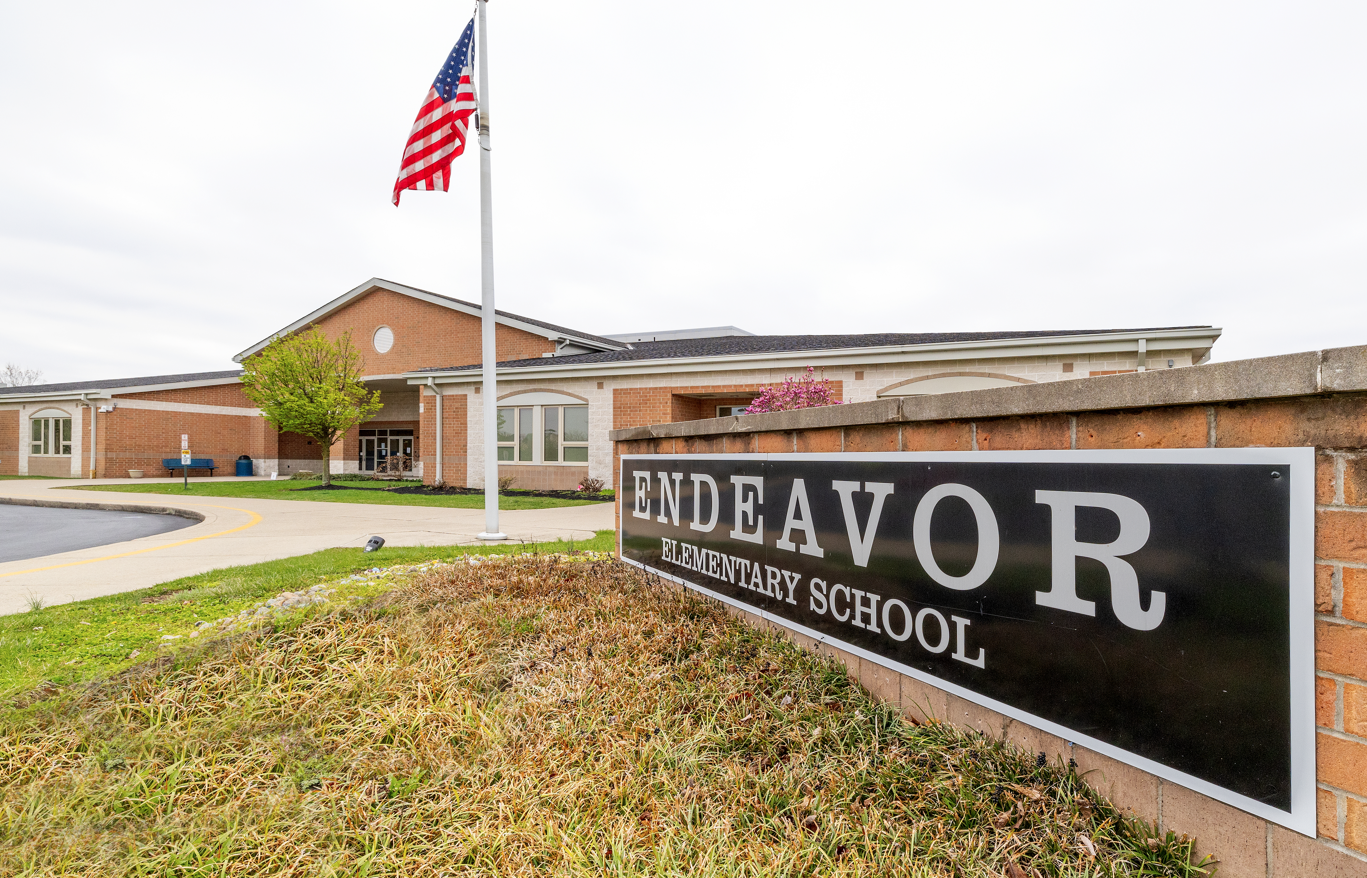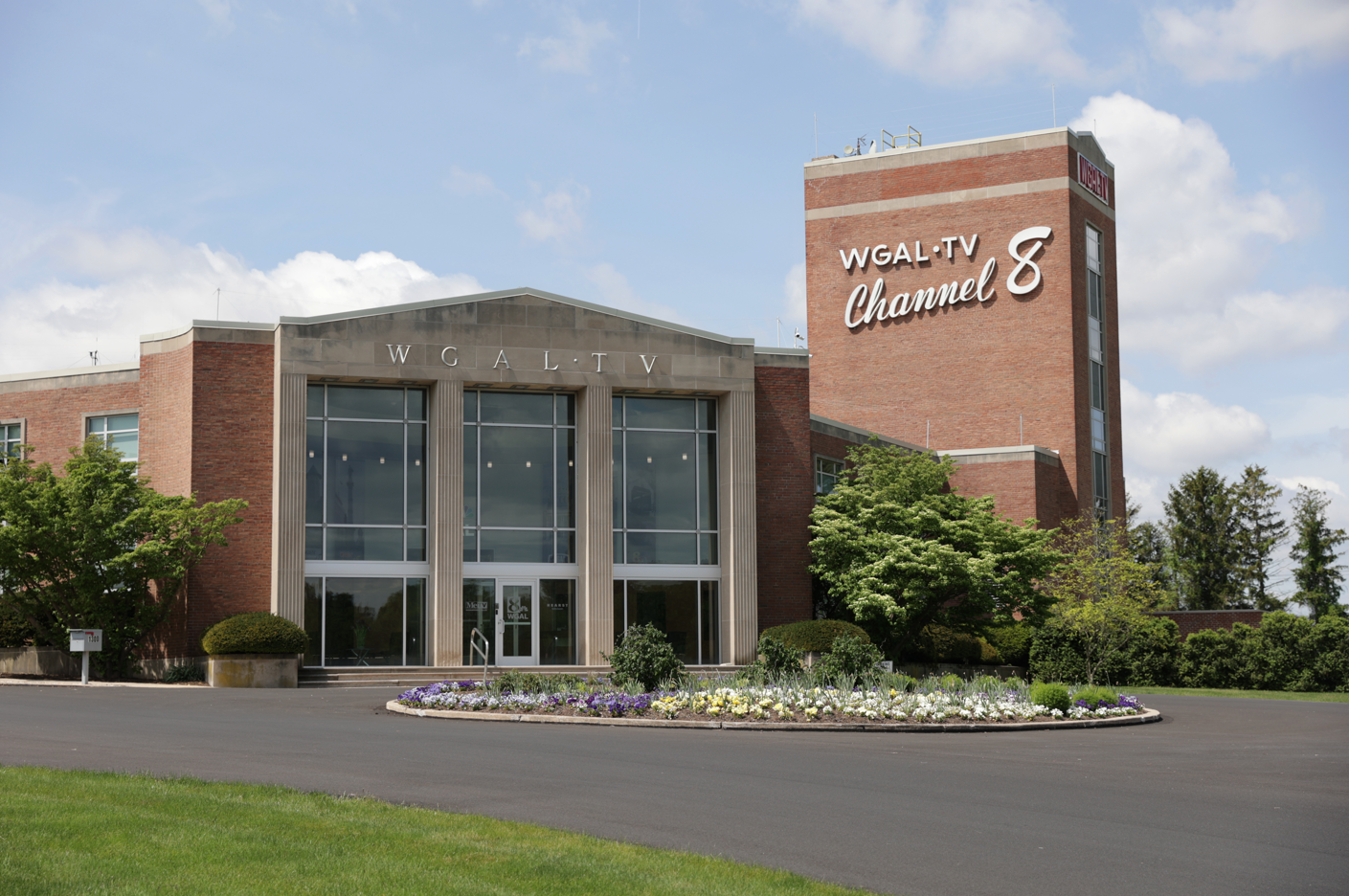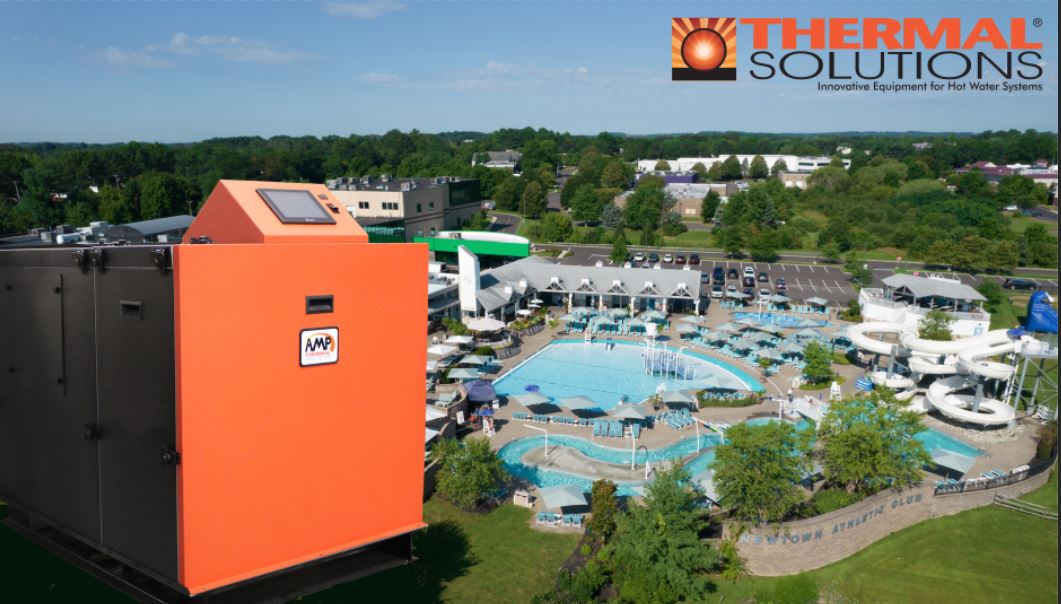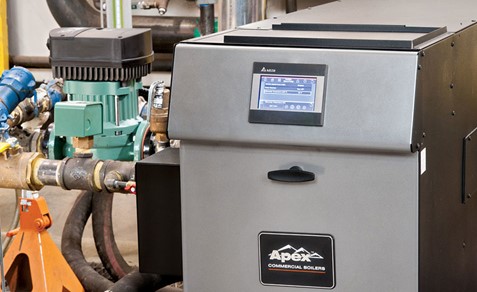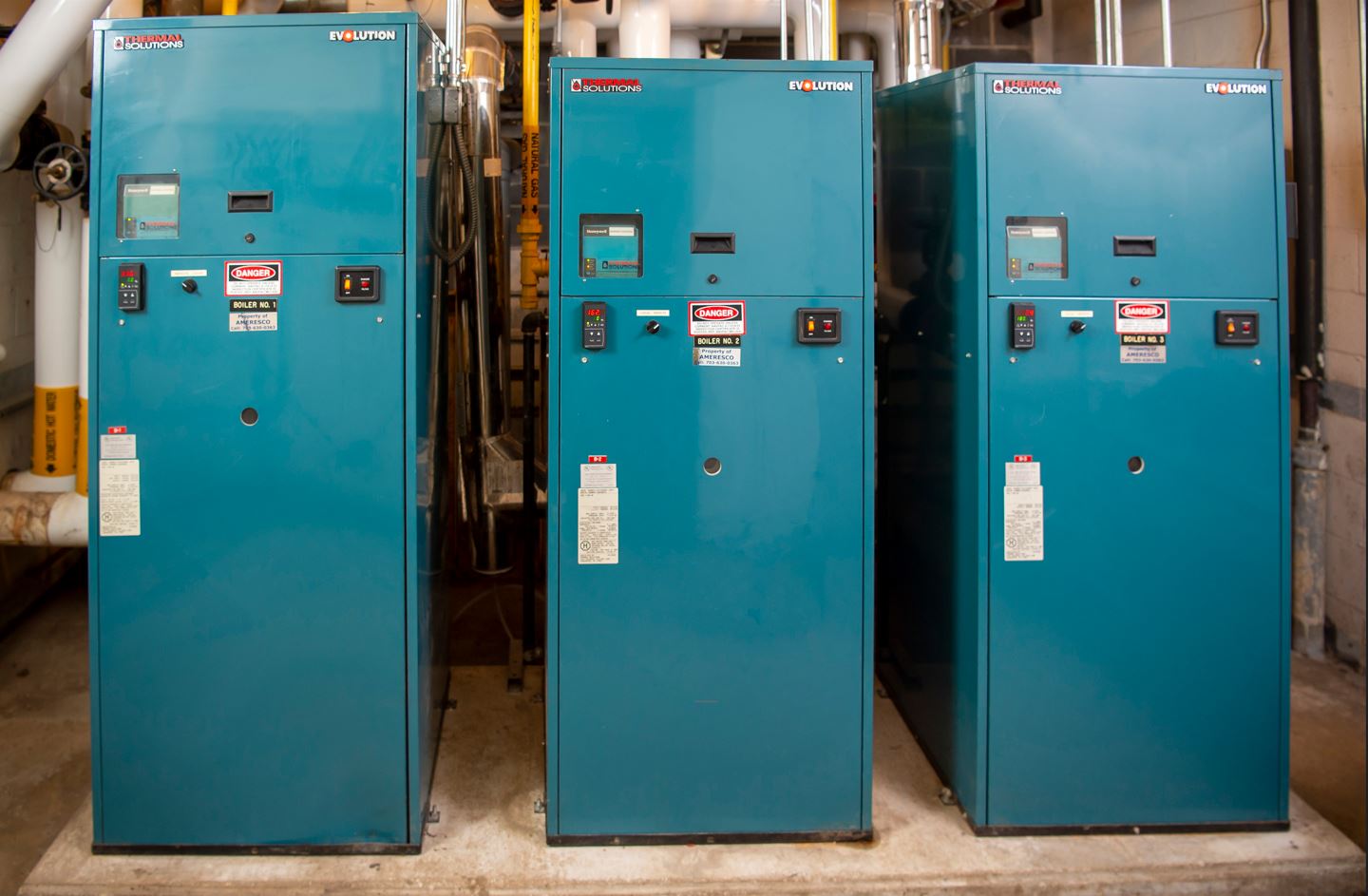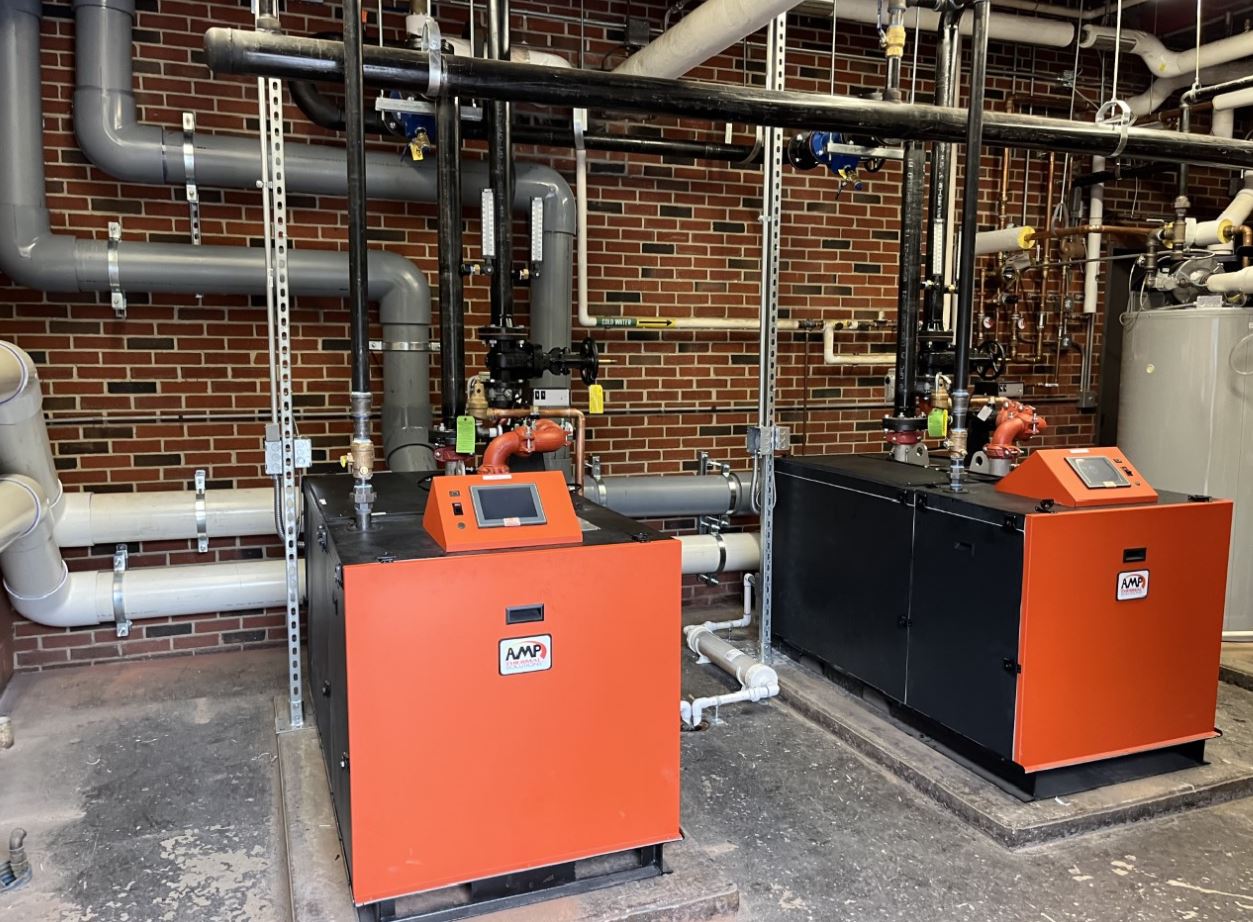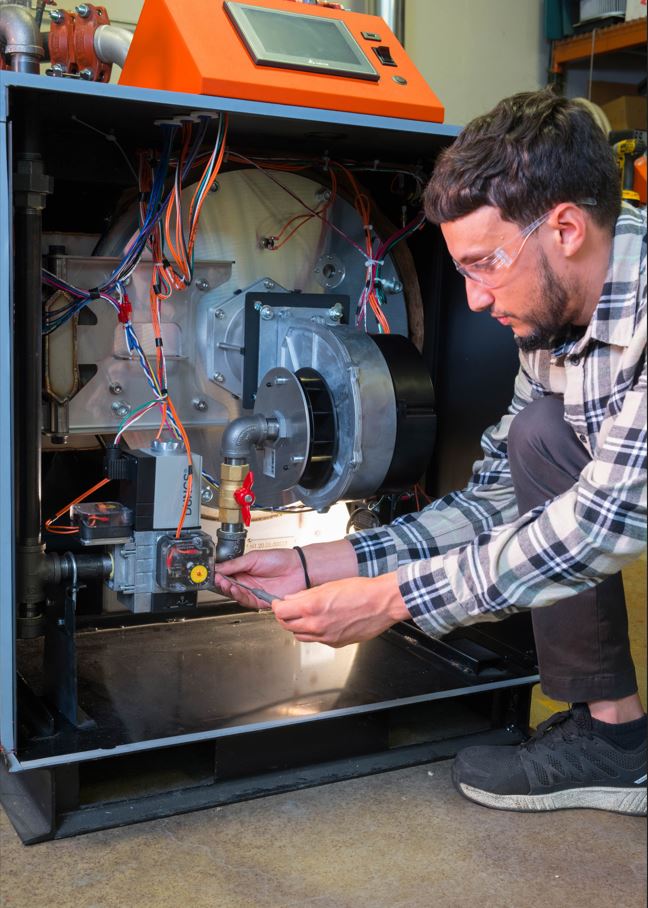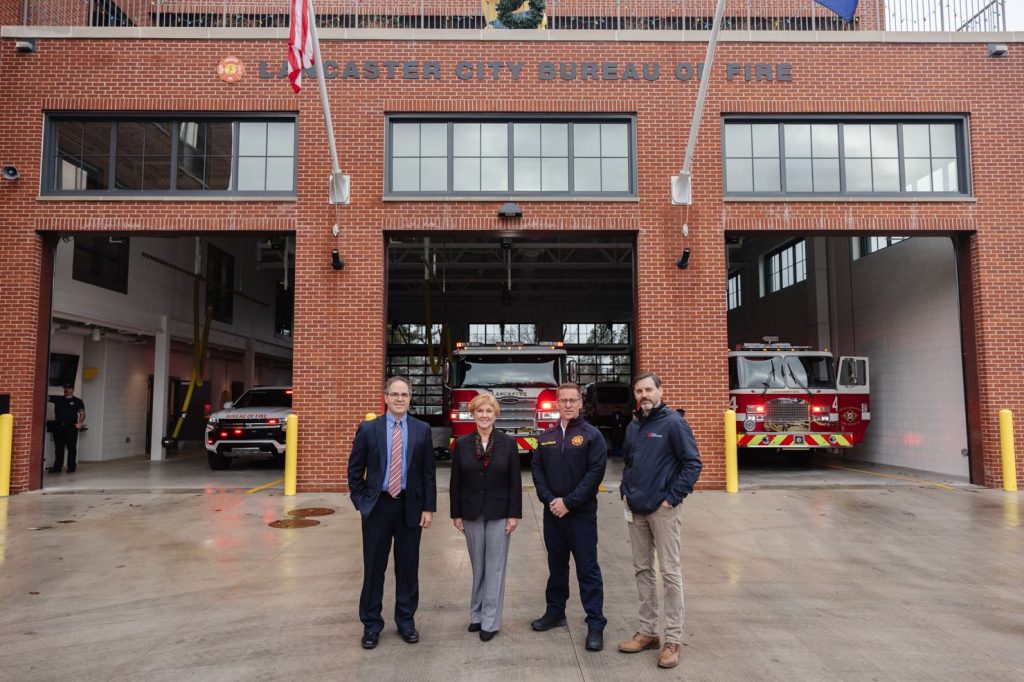 Mechanical Systems Masterpiece
Mechanical Systems Masterpiece
Lancaster, PA, in the heart of Pennsylvania’s Amish region, is one of the oldest cities in the country. But, just like every other town and city in the nation, risks of fire and other emergencies are very real.
Back in the 60s and 70s, several fire stations were built in Lancaster. They served the region well, though as you might guess, the 50+ year-old facilities were gradually compromised by wear n’ tear and their inability to meet contemporary needs, including accommodations for larger equipment. The need for greater energy efficiency also became a detriment. Fuel for heating doesn’t cost what it used to!
Construction of two new fire stations near the city’s center were recently completed on the sites of the old ones. Station 1, on West King Street, was first demolished and replaced. Station 3 on East King Street was completed in 2022.
To save money, the same design was used for both stations. Each was budgeted at about $5 million. According to Ryan Hunter, Manager of Parks and Public Property, Lancaster Department of Public Works, the “double-duty” facility design also served to improve economies of scale with the general contractor, architecture, engineering, mechanical and electrical contracting, fire protection and plumbing systems.
“Fire bureau members waited years for this opportunity," said Hunter. “The living quarters at both stations were substantially upgraded.”
Future-proofing
“The mechanical systems design for both buildings played a key role,” added Hunter. “Ken Kauffman [PE, LEED AP] and his firm helped us achieve much-improved thermal comfort, energy efficiency and future-proofing to the best extent possible,” added Hunter.
Kauffman is president of Lancaster, PA-based Moore Engineering Co.; this is his 38th year with them. Moore wasn’t chosen by accident. The company’s experience with municipal and commercial buildings, schools and senior care facilities runs deep.
According to Kauffman, “The commercial building industry’s push for greater energy efficiency is more forceful than ever.” Much earlier, as a newly-minted engineer and fresh out of PSU in 1985, he began building professional experiences at Moore during the decade following the oil embargo era when they thought they were designing for energy conservation.
“Today’s technologies, building and system designs are far more advanced and capable,” he added. “This facility is sensibly constructed, yet marvelously suited to its need. It’s comfortable and energy efficient – thanks much to the use of hydronics here at the fire station.”
The mechanical systems design for the twin structures were price-sensitive, said Kauffman. There were very real constraints as to what was feasible. “But the team brought together through a common goal of making this possible for the community exceeded expectations at every turn,” he added. “The buildings provide an exceptionally good long-term value for Lancaster.”
An example of this was the eager involvement of Burnham Commercial Boilers – the local firm that donated super-efficient condensing boilers for space and domestic water heating. Chris Drew, Burnham’s Holdings, Inc. CEO, pledged to donate boilers for both facilities. He said, “This is our community, so how could we not help in a substantial way?”
Ann Swartzbaugh, Northeast Regional Sales Manager for Burnham’s HSSC (Heating Solutions Sales Company) said that she worked closely with the design committee, including Kauffman. “We’ve had many good experiences with Moore Engineering, so this became a new and exciting opportunity to specify the right [heating] technology, to collaborate on a system that would deliver many years of efficient operation, and to give back to the community we live and work in,” she added.
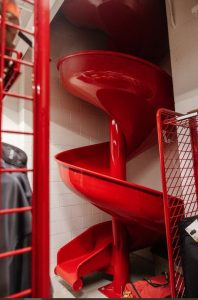 No brass pole
No brass pole
Chief Todd Hutchinson, Fire Chief, City of Lancaster, led a group of visitors to the building’s upper level where several firefighters were enjoying the new living quarters. While one was preparing burgers for the grill, others readied for a workout before going on duty.
In its upper floor, the newest King Street fire station sports a well-equipped fitness room. There’s also a shiny new, commercial kitchen and comfortable dining area, complete with a giant, custom dining room table – unquestionably the alter of a firefighter’s lair – a labor-of-passion build by Dave Benson and several other firefighters. “It gives us solidarity and a sense of home,” said Benson.
There’s also a common area with large, flat screen TV. Ample sunlight bathed the area through big glass doors leading to an expansive outer deck with seating and barbeque grill. According to Chief Hutchinson, there’s also a private dorm for female firefighters, captains and battalion chiefs.
Chief Todd M. Hutchinson, Fire Chief, City of Lancaster
But, should the alarm sound, there’s no brass pole for firefighters to make a quick drop to the lower floor. Instead, firefighters use a bright red three-story spiral slide to reach the ground floor. “That’s where they jump into protective clothing and other gear before climbing into the trucks. We train frequently to be sure that all facets of our operations are familiar, fast, and well-rehearsed,” said Hutchinson.
The transition from traditional pole to modern slide is an example of the emphasis placed on workplace safety. For instance, the station was designed to control dangerous contaminants. According to the fire bureau, firefighter cancer rates are about 40% to 50% higher than the general population. Research has shown that exposure to carcinogens at fire scenes intensifies these health concerns.
(Callout:) “From the outset, our mayor and others involved in the planning made a firm commitment to the men and women of the fire bureau: improving their workspace is a top priority,” continued Hunter.
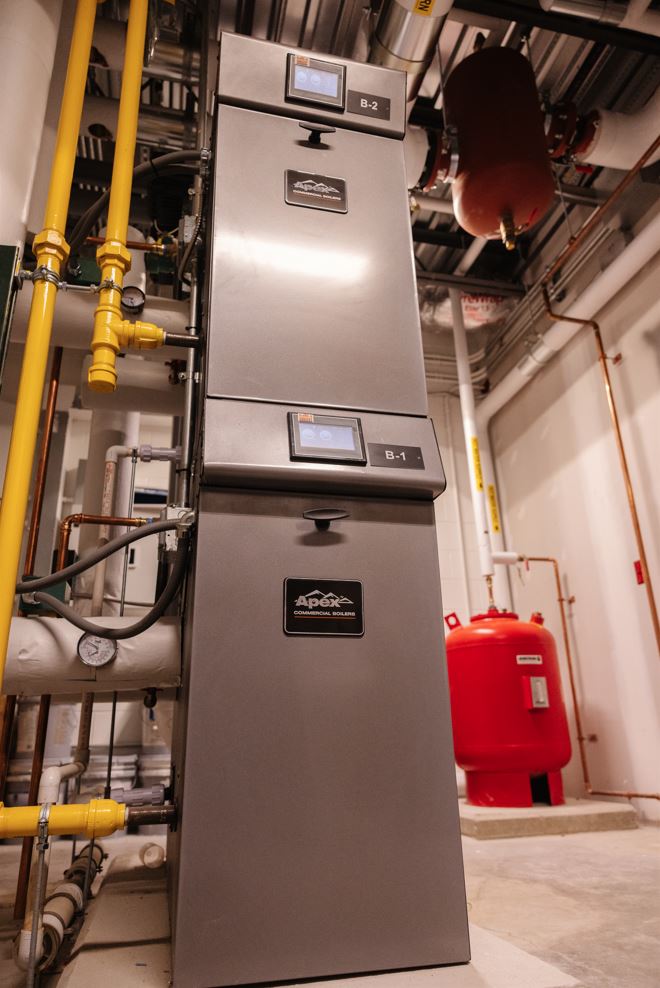 Green construction
Green construction
Each of the new fire stations is topped with a green roof that includes vegetation to absorb rain – rather than sending it into the city’s stormwater drainage system.
But, inside is where greater evidence is seen of the facility’s purposeful sustainability and energy efficiency. Daylight is maximized and LED lights are used. Low-flow products were used for all water fixtures.
On the second floor of each fire station are immaculate, state-of-the-art mechanical rooms. The crown jewels of each of these are two stacked, 500 MBH, condensing Burnham Commercial Apex boilers that operate at up to 95% efficiency – each served by a host of Taco ECM circulators: five Taco 00e circs of varying size govern the zones and a larger Taco 1915e serves the primary loop.
The natural gas-fired boilers, offering intuitive touch-screen control, are direct vent, sealed-combustion systems with negative cabinet pressure. The lower portion of each boiler’s cabinet operates under negative pressure to create an added layer of safety. Each low NOx Apex offers 5:1 turndown, stainless steel combustion chamber, and multiple venting options up to 200 equivalent feet. The Apex line offers 500, 625, 725 and 800 MBH sizes – all stackable two-high without additional framing.
According to Kauffman, the stacked boilers (rather than a single unit) were chosen to provide redundancy. The primary-secondary piping serves four high-mass, in-floor radiant heat zones for the large equipment bay, and also several terminal units (convectors and cabinet heaters) for common area space heat.
In the enclosed, radiantly-heated equipment bays, the spit-shined red and gold trucks are kept in mint condition. If garage doors are opened for a quick exit during the winter months, the radiant heat assures fast set-temp recovery.
Ready to serve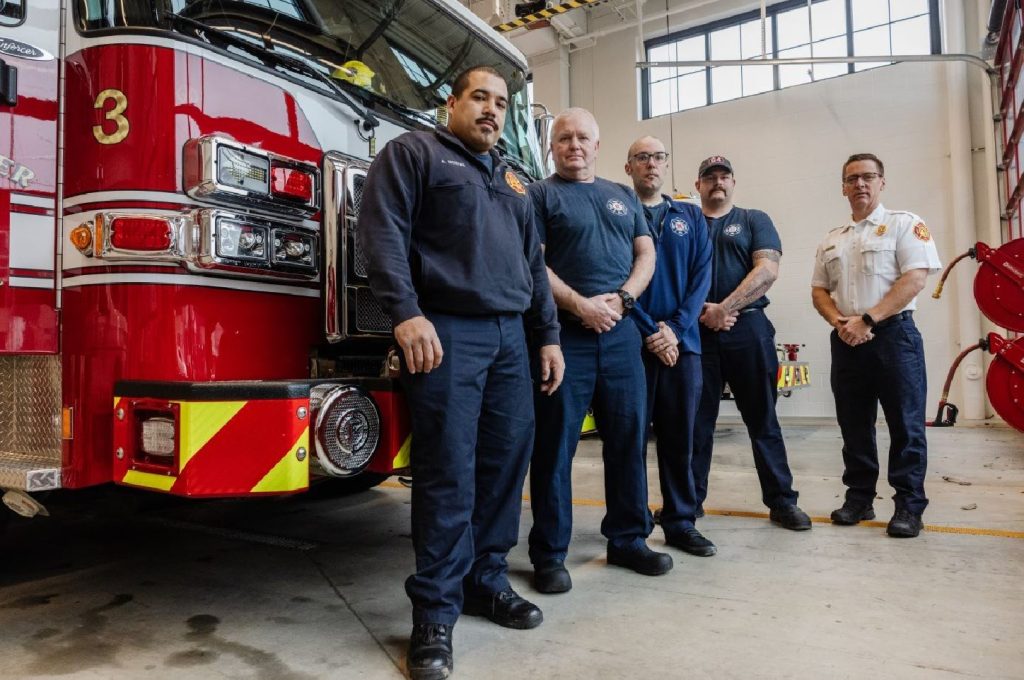
Hunter said that the new fire stations have already reduced emergency response times throughout the community.
The 18,000-square-foot, West King Street station houses both of the city’s two specialized fire units. The new facility is home to EMS personnel and equipment on one side, and large fire equipment bays on the other.
At a minimum, 15 firefighters are on duty and ready to respond to emergencies at any time. The station is expected to respond to about 4,000 service calls each year.
Now, more than ever – Lancaster’s Fire Department is ready to serve.
# # #

